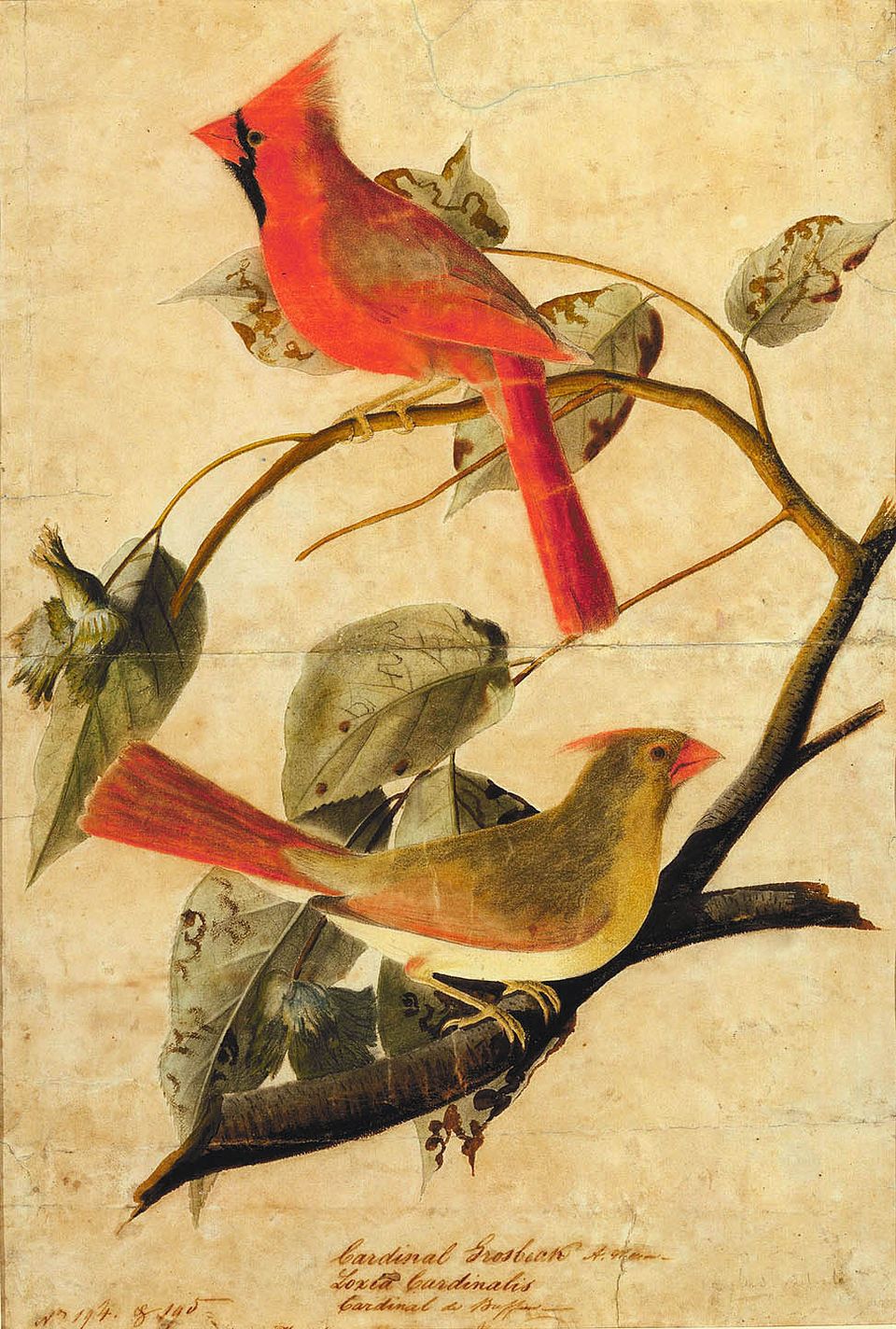
Here's an excerpt from Paul Richard's Washington Post article about Audubon's Birds of America, selections from which are on view at the National Gallery of Art's Audubon's Dream Realized exhibition:
Though the artist is remembered as notably American, he wasn't wholly ours. J.J. Audubon was born Jean Rabine in Haiti in 1785. Until he was 18 the painter lived in France, and it was surely in that rich, cultivated country—not while tramping across our trackless woods, or wading through our swamps—that he first absorbed the stylish scrolls and luxurious arabesques and ripe rococo curls that activate his art.
Read the whole thing. Richard's comments run along the lines of the Eye Level discussion "Art in America." Those "arabasques and ripe rococo curls" in addition to the tobacco-stained hue of Audubon's palette reflect Old World design elements seen through a New World lens. As was often the case for early American artists, Aubudon's works were intended for his European audience (that is, buyers).
In Europe, his oversized naturalist prints appealed to a colonial sensibility. The political dimension to Audubon's work makes him a figure worth revisiting for contemporary artists. Take, for example, the politically charged works of Walton Ford. Ford adopts not only Audubon's representational style but also adapts biographical and historical nuggets from his world. The irony is not lost on Ford, for example, that Audobon's naturalism, which lavished so much praise on America's flora and fauna, came at the cost of a lifetime spent hunting the exotic subjects for his watercolors. That European curio cabinets were the repositories for his prints while the artist himself lived on the brink of financial ruin is important to Ford's watercolors and prints. And Ford's "Nila" series (1999–2000) connects Audubon's colonialism to present-day concerns about class and national boundaries [Nila (Swadeshi-phobia) in particular].
Are those national boundaries still very important to art? Far, far earlier than Audubon's time, artists were borrowing willy-nilly from one another's cultures. Is an artist's palette global? If so, in what sense are Audubon's birds "patriotic"?


















